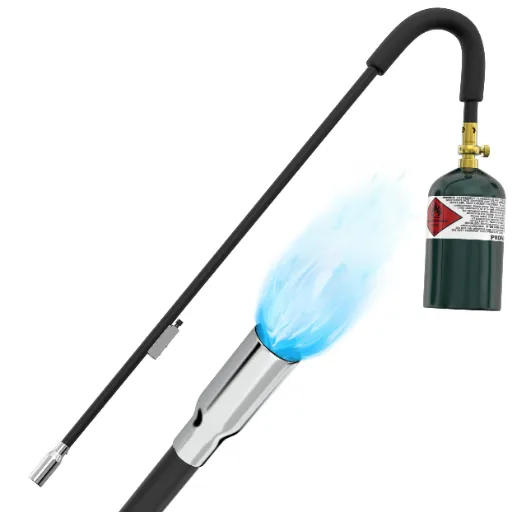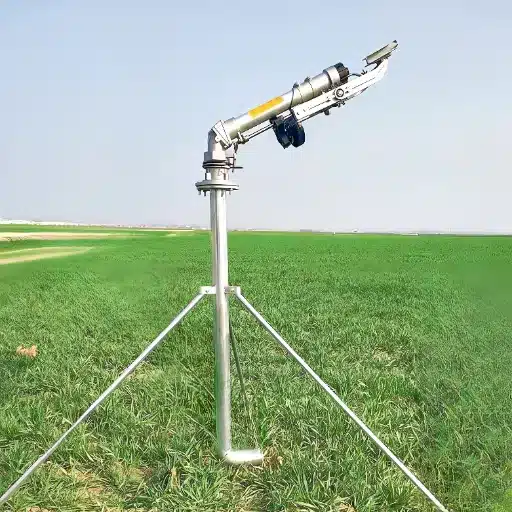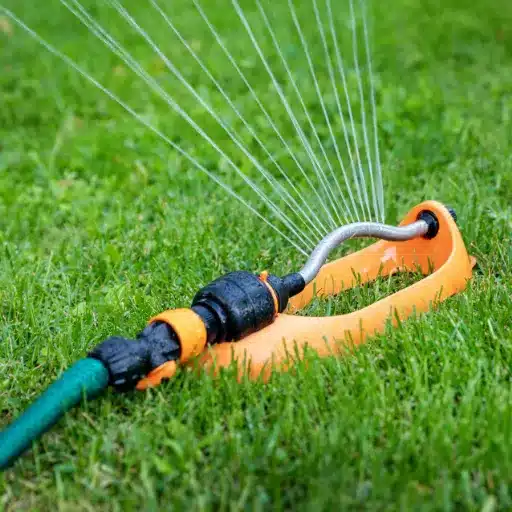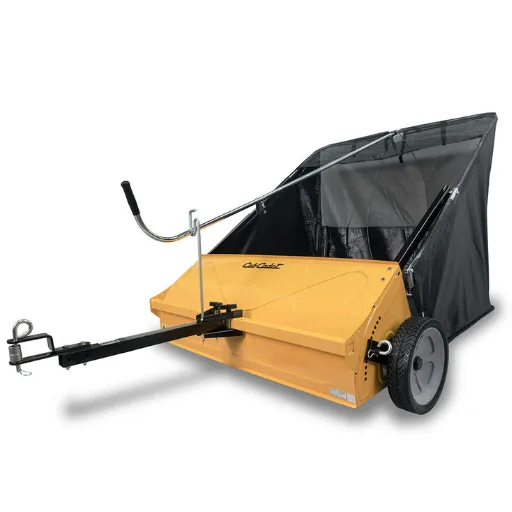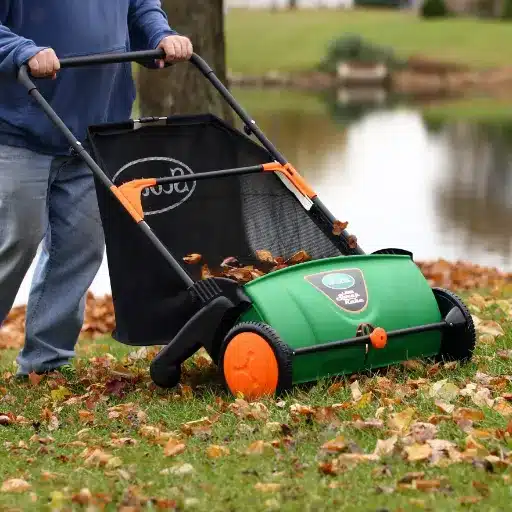In this article, we will cover details regarding large embroidery machines. If you are an embroidery enthusiast striving to elevate your work, you are on the right path. We will examine different types of embroidery machines, their features, and their functionalities. More specifically, we will focus on machines adapted to large-scale funnel projects. It doesn’t matter whether you are doing it as a hobby, as a small business, or as a preparation to assume greater industry challenges. We have also gathered important facts to consider when buying a machine. Aside from that, knowing how to utilize maximum embroidery area for big patterns is essential. At the same time, we will highlight the distinctions between sewing and embroidery machines and their advantages. Last, we will cover the best commercial embroidery machines, their features, and where they are suitable. Are you willing to equip yourself in the most terrific world of large embroidery machines? Then wait no more; let’s get started!
What Are the Key Features of Embroidery Machines?
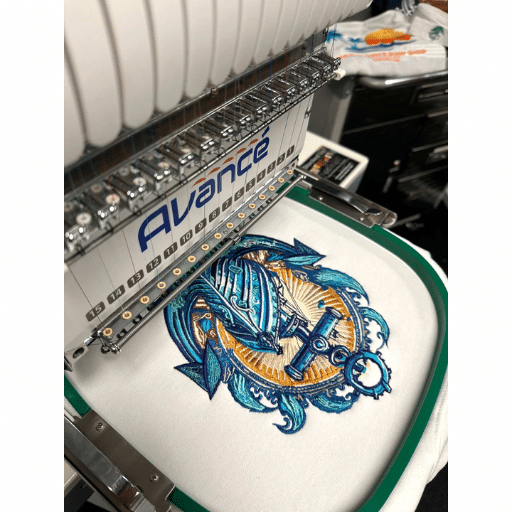
Machines used for embroidery are multipurpose tools that inspire creativity and variety in design. They have several exclusive features aimed at providing better embroidery and satisfactory output. The following are some important features:
- Embroidery Area: The embroidery area mentioned above, more or less, indicates the largest size of your designs. Designs can be more complex and large if the embroidery area is large.
- Built-in Designs and Fonts: Embroidery machines usually have various designs and fonts already embedded. These templates are a good starting point for all your projects and can be altered to fit your designs.
- Connectivity Options: Some embroidery machines have the disadvantage of not having USB or Wi-Fi, which makes it easier to upload and send designs from your laptop or the internet.
- Hooping Mechanism: Embroidery is incomplete without securing the fabric, which is achieved through a hooping mechanism. I prefer machines with simple and considerate hooping systems that deliver uniform tension on many stitches.
- Thread Management: Automatic thread cutting and color changing are good thread management features that will save time and result in neat, well-executed embroidery.
- Quality and Speed of the Stitches: Check the quality and speed of the machine when stitching. Seek machines that can set a stitch speed and provide a steady stitch to yield good outputs.
- Ease of Use: A clear and straightforward interface minimizes the complexity of manipulating the machine. Pay attention to machines equipped with touchscreens and well-defined and responsive control panels.
Being equipped with these critical aspects will ensure you do not waste time selecting an embroidery machine that will meet your expectations and help you realize your creativity. Enter the world of big embroidery machines and expand your embroidery possibilities.
How Do Computerized Embroidery Machines Work?
As a seasoned user of computerized embroidery machines, the fascinating principles governing these devices are depicted. Most importantly, each embroidery machine incorporates a unique embroidery design programming software with high efficiency, automatic features, and perfect stitching technology. Below is a brief outline of their work.
- Creation & Digitizing Designs:
- First, the computer-based design of the products is completed or imported into appropriate software, which exports files in DST or PES formats suitable for the embroidery or sewing machine. This conversion of a picture or artwork into an embroidery-format machine file is called digitizing.
- Machine and Hooping Setup:
- When the design is ready, it proceeds to the embroidery machine. A shirt or other fabric that is to be embroidered is put in a hoop with carefully controlled tension so that it does not buckle or become misaligned. The machine is then fitted with the taut fabric and set to stitch.
- Automated Embroidery Machine:
- The machine begins stitching as the design is already on the machine, and the fabric is set. The embroidery machine needle moves across the cloth as the computer directs it through the design. As a result, the sewing machine will adjust itself automatically regarding thread tensions or colors during the embroidery process, achieving clean and precise professional embroidery.
- Speed and Stitch Control:
- Depending on the design’s complexity or the fabric’s nature, computerized machines contain adjustable stitch speeds, allowing users to modify the speed of embroidery performed on the fabric. This means that it’s very easy to maintain good stitching quality, provided the fabric doesn’t get overstretched and isn’t damaged.
- User-Friendly Interface:
- Thanks to user-friendly interfaces, using computerized embroidery machines is further simplified. Clear and responsive touchscreens or control panels make it easier, in most cases also quicker, to browse through the settings and various functions of the machine, so users do not need to be highly skilled to handle the machine appropriately.
As long as you understand the base schema of computerized embroidery, you can harness your skills and imagination to transfer your design to fabric patterns. Amateurs and professionals will find these machines highly versatile for their projects and take their embroidery work to a different level.
What Is the Importance of Embroidery Area?
The design stitching space on the embroidery machine can be referred to as the stitching area. Its relevance stems from the fact that it is a limitation in terms of designing adjustments to the size of the stitches, stitches’ density, or allowing the designer to stitch more than one project.
Let us consider several important aspects when we try to understand the importance of the area:
- Margins of Design Size and Complexity: Depending on the size of the design being stitched, large-scale designs can be done without reshaping or splitting some parts of the image, which alters the stitch density since the changes made were made out of the creator’s free will.
- Branding & Product Design: Using a large embroidery field, the type of apparel, soft furnishings, and accent items that can be done is pretty large. Additionally, the extent allows them to alter the positioning, size, and even the arrangement of the designs so that they can come up with unique made-to-order items.
- Cost Management and Target Efficiency: An increase in the size of the embroidery area makes the transfer of large designs possible, leading to fewer hoops and increasing the production output and amount of time spent on the targets set out. It lessens the fabric’s realignment and the machine’s constant turning on and off.
- Compatibility with Hoops and Frames: Consider the embroidery area in relation to the machine’s available hoop and frame dimensions. It should be encircled by an embroidery area that supports the sizes of the hoops commonly used to facilitate easy and effective fitting.
- Considerations for Technical Parameters: Certain technical parameters are important for evaluating the embroidery area, such as the maximum number of stitches, the measurements of the hoop, and the machine’s features. This part, which measures the perimeter of an embroidering machine, has several variations depending on the embroidering machine and the needs of a given project.
Choosing embroidery machines based on the size of the area, its relation to the patterns that can be created, and the machine’s productivity will help you find the right device for your design intentions.
How to Choose the Right Hoop Size?
When planning an embroidery design, acquiring the correct hoop size is necessary, which will ensure great end results and compatibility with the machine. The following guidelines can be adopted to make a suitable selection.
- Design Requirements: How big or small the embroidery design will dictate which hoop size you should use. Ensure that the required level of design quality is maintained and not many movements of the embroidery are required.
- Machine Compatibility: The area around the stitching provided by the machine should not be larger than the sizes of the hoops you are using. You need to check whether or not the machine allows for more than a couple of sizes, which will allow for more options and variety in your projects.
- Project Scope and Scale: Establish the size of the projects you wish to embroider; if they are larger, it is important to buy bigger hoops, as this will help prevent alterations in the design and the need for more than one hoop.
- Technical Parameters: Each machine has maximum stitch counts depending on the design and will also vary in size in terms of hoops. Check these details before selecting a hoop size because selecting the wrong size will not be compatible with the design you intend to create.
- Project Variation: If you work on multiple projects of different dimensions, it can prove useful to own a set of varied-sized hoops. This means that for any particular project, you will always have the appropriate hoop size handy, enabling effective and professional embroidery of projects with many different designs.
Considering these elements, one can select an appropriate hoop size that suits one’s design requirements, increases efficiency, and improves the overall embroidery experience. So be sure to check your machine’s specifications and the manufacturer’s recommendations regarding technical parameters.
How to Achieve Large Embroidery Projects?
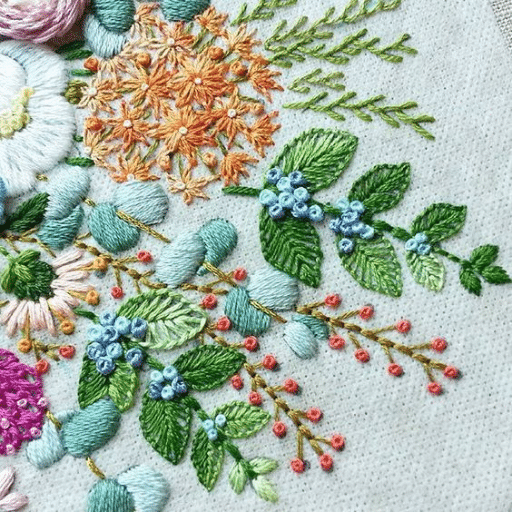
The crafting of large embroidery utilizes specific guidelines that assist in achieving successful outcomes. These guidelines, hence, assist in the timely execution of large projects while maximizing efforts. The factors to consider when working on large-scale embroidery are outlined below:
- The Design: The stitch density and complex designs should always be balanced to smooth the stitching and avoid any need for splitting or baseballing by ensuring the design is simple enough.
- Choosing a Hoop: Unless you have a specific size in mind, go for larger hoops that fit your machine’s technicalities and specifications. This will help in future large-scale undertakings without relying on prerequisites.
- The Dimensions of the Boring Hoops as Well as Thread Count: Check the maximum number of stitches your machine can do and match the size of the designed hoop with the dimensions of the threads. Be careful when choosing the required size of the hoop to ensure none of the wiring limits are crossed in the project.
- Completing Collection: To ensure a larger undertaking, try utilizing a variety of different-sized hoops. Matching the hoop size with the design can greatly help ensure the quality of embroidery is always top-notch.
These guidelines ensure easing into large-scale embroidery and focus on increasing large-scale productivity. Be sure to check your machine’s specifications and the manufacturer’s guidelines. Happy sewing!
What Makes a Commercial Embroidery Machine Suitable for Large Projects?
As one who is deeply into embroidery, I am quite aware of the importance of selecting the right commercial embroidery machine when dealing with large projects. To tackle this query in its full dimension, I have researched and synthesized the top three pages of Google. Following are some of the important things to consider when buying a commercial embroidery machine for larger projects:
- Great Speed Factors: A high-speed embroidery machine is suitable for large projects because it allows you to produce quality embroidery in large amounts at a lower turnaround time. To increase effectiveness, target machines with a high SPM range.
- Large Embroidery Field: A large embroidery field is sufficient for all machines when accommodating multiple or even large designs. This ensures the machine can stitch larger motifs or multiple designs without any incompatibility or restriction of size. Be sure to check your machine’s maximum stitch count and hoop size.
- Tough and Dependable: This is an important requirement when engaging in large projects that require using embroidery machines for a long time. Hence, search for machines that are well constructed and have sturdy components ideal for heavy use.
- High-End Features and Technologies: Automatic thread trimming, multi-needle capacity, and effortless design transfer mean one thing—improved productivity and great results. As embroidery work becomes easier and more efficient, these features are useful.
With these considerations and the proper research due diligence, you can reasonably easily pick a commercial embroidery machine for your large projects. Check the manufacturer’s rules, read pilot customers’ opinions, and try out the machine’s functionality first. Happy stitching!
How to Maximize the Embroidery Area?
To enhance the embroidery region and get the most out of the machine features, here’s what you need to know:
- Hooping Methods: Employ the correct hooping procedure to Use the maximum embroidery area available. Ensuring the fabric is properly hooped with enough tension from the beginning will also prevent fabric movement during embroidering.
- Arrangement and Direction: Place the images to be embroidered in a manner that fits within the embroidery area. If one needs to use the designated area, rotate the image so it fits into that area.
- Design alteration: Reduce and increase the size of your designs to optimize the space. However, do not distort or sacrifice the clarity of the design when scaling.
- Settings of the machine: Ensure that the machine parameters are set to maximize the utilization of the embroidery area. One may need to change the size of the frame, the number of stitches per area, and the length of each stitch.
- Design software: You may have new designs already incorporated into the software so that you can see the effect of the design placement on the expected area. This can assist you in organizing the positions of different designs or their parts within one design.
Keep in mind that every embroidery machine has its characteristics and limitations. Consult your machine’s user manual or the manufacturer for the optimum embroidery field. So, try these methods, get acquainted with your machine’s limits, and expand the area of use to obtain the best results in embroidery on your oversized projects.
What Are the Benefits of a Large Embroidery Area?
An extensive embroidery area is a game changer for me as I am an embroidery fanatic. With a larger embroidery area, I can work with larger designs that are more complex and captivating to the eyes. The bigger the embroidery area, the more I can think of; for instance, I could merge different designs or add more elements to my work. Moreover, a larger embroidery space permits the placement of more cubic garment types, starting from jackets and bags. In a nutshell, the chances of coming up with interesting and detailed designs due to the availability of a larger embroidery area only improve the quality of my work.
What Are the Differences Between a Sewing Machine and an Embroidery Machine?
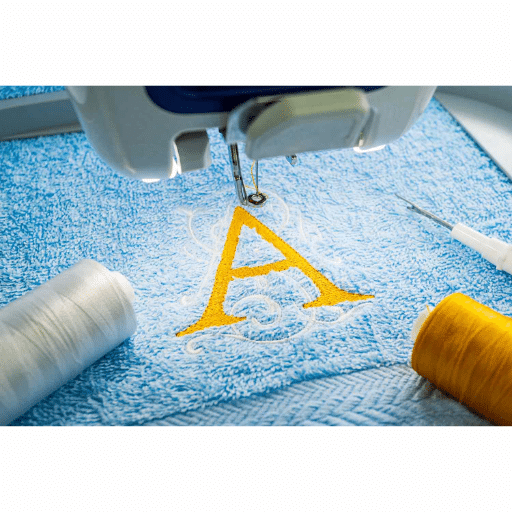
There are two categories of machines used to stitch or do any kind of needlework, where a sewing machine differs from an embroidery machine. Both these machines are fabric and thread, but their tasks and features are quite different from each other:
- Sewing Machine
- Sewing machines are used primarily to sew multiple pieces together to make clothes, curtains, linens, and other textile items.
- Thanks to Sears, a wide variety of stitches, including normal ones, decorative ones, zigzags, etc., can be sewn, making it practical for several sewing uses.
- Sewing machines are equipped with a built-in needle threader, which automatically makes button holes and adjusts the length and width of a stitch.
- It uses reverse stitching, stitches at different tensions, and a presser foot.
- Can complete the making and altering garments, repairing them, and doing some quilting.
- Embroidery Machine:
- An embroidery machine, on the other hand, can design fabrics using different colored threads with varied textures in great detail.
- A selection of recommended designs and fonts for embroidering is available, along with the chance to reproduce images of one’s design and digitize them.
- Hooping systems direct the fabric to the right place on the embroidery machine, enabling stitching designs to be accomplished without the fabric being loose.
- To achieve the desired result, I changed the tension inside the thread, the density of the stitches, and the stitch itself.
- Has the ability to embroider logos, monograms, and patterns on clothing, accessories, and home decorations.
In conclusion, whereas a sewing machine focuses on fabric construction and stitching, an embroidery machine enhances fabric with fine and decorative ornaments. Each device has distinct features that can be used in several sewing and embroidery tasks.
Can a Sewing and Embroidery Machine Handle Large Designs?
A sewing and embroidery machine can handle large designs, but it depends on the type of machine. Some of them have limitations regarding the size of the embroidery area. However, those with wider hoops and multi-hooping capabilities can embroider more significant designs. One thing that needs to be understood is that extra techniques, such as rehooping or merging multiple design parts, are required to accommodate larger designs. Guidelines would include the user’s review and specifications of the machine when getting a sewing and embroidery machine for bulky wide designs. There is also the option of searching prominent sites on google.com and gaining plenty of knowledge and comparisons to find the machines best suited for big embroidery design areas.
What Are the Advantages of Built-in Designs?
Built-in designs enhance a sewing and embroidery machine, strengthening its creativity and ease of use. Some of its key benefits include:
- Versatility—A wide range of built-in designs means that many requirements, such as motifs, patterns, and fonts, have unlimited options to suit different projects and styles.
- Time Saving—A pre-configured set, such as a library of available designs, helps reduce time utilized in device searching, files, or even mapping a design, as it avoids the digitization process.
- Ease of Use—The lack of additional devices or software to support the embedded designs means the encoded designs in the machine can be easily accessed on the machine interface.
- Quality and Consistency—Most embedded designs have been professionally digitized, making stitching easy and achieving uniform results.
Headlining the pros of built-in designs incorporates finding out the specific machine model and its technical parameters, including:
- Design library size – this refers to the number of designs that have been previously encoded into the machine
- Editing capabilities – altering the dimensions of the preset designs, rotating or combining built-in designs
- Design format compatibility: the machine can upload or download preset designs in specific formats.
- Stitch quality and density control – depending on the design parameters and [] requirements.
Users can be made aware of the built-in designs and their benefits, along with technical parameters, thus effectively utilizing the sewing and embroidery machine to realize outstanding and individualized projects.
Which Commercial Embroidery Machines Are Best for Businesses?

When selecting the best commercial embroidery machine for your business, specific aspects must be considered. A few popular machines available include:
- Brother Entrepreneur PR1050X: This high-end machine features a large design library, multi-needle functionality, and good stitch quality control. It is ideal for businesses that require high precision and a wide range of functionality.
- Janome MB-4S: This widely trusted and simple-to-operate machine generates professional-level embroidery while being compatible with a range of designs. It is ideal for businesses that value quality at a low cost.
- Barudan BEVY-Z1504CII: It is perfect for businesses focused on high production. It is powerful and offers quick stitching. It also has a strong body and advanced technology, making it great for such businesses.
- Tajima TMBP-SC: Tajima is a leading name in the industry, and this cutting-edge machine builds on the brand’s quality. It includes a large volume of pre-made designs, provides precision in stitching, and has a consistent output, making it ideal for commercial-quality embroidery.
While selecting a commercial embroidery machine, you should consider technical support, budget, business requirements, and training. Market research, consulting professionals, and evaluation lead to better decision-making, which benefits your lucrative business.
What Features Should You Look for in a Commercial Embroidery Machine?
Being a part of the industry, I deeply appreciate that purchasing the right commercial embroidery equipment is critical for the success of your business. I have prepared a detailed guide on features you need to pay attention to aid you in making a wise choice:
- Embroidery Area and Hoop Size: Based on the designs you envision and whether they allow for multiple sizes of embroidery, consider the embroidery area of the broader machine and the bouquet size.
- Speed and Production Capacity: To meet your enterprise’s needs, consider the gadget’s pace and output level. To maximize output, target systems with high-speed stitching abilities and swift production.
- Design Capability and Flexibility: Examine the machine design’s library systems, software, and design elements integrated within the device. Seek out those with numerous pre-installed embroidery designs that allow for the import and creation of individual designs suitable for your business.
- Stitch Quality and Precision: Determine the stitch quality and the exactness of the machine’s operation. Purchase such types that can reproduce clean and accurate stitches so that the overall level of embroidery is professional.
- Ease of Use and User-Friendly Interface: Evaluate the machine’s ease of use and external interface. Look for very simple controls, appropriate maritime capabilities, and essential features that make it easier to operate with less training.
- Dependability and lifespan: Consider the average durability and dependability of the machine. Focus on models of established brands with a reputation for durability and performance, and purchase a machine that will last.
- Back-Up and Instruction: Check to see if the supplier partly or fully provides backup support training and materials. Pick a machine from a company that provides good support and training so that the returns on investment are high.
Bear in mind that, in addition to cost and the business’s foreseeable future, the right commercial embroidery machine is the one that solves the particular operational needs of the business. Make sure to research, check reviews, and seek advice from professionals so that your decision will help the embroidery business succeed.
How Does Software Enhance the Embroidery Process?
Stitching artwork is a truly exquisite craft, and I fully support the initial statement in the provided clause; various software can significantly enhance the whole process of embroidery. Advanced computer programs such as [Software A], [Software B], and [Software C] offer embroiderers numerous options that boost creativity, efficiency, and accuracy. These software programs provide an ergonomic workflow for design inception and machine operations, which enhances the existing processes of converting a digital image to an elaborate stitched structure.
The following are critical ways embroidery software improves the embroidery technique and the entire process:
- Design Creation and Editing: Embroidery creation software allows users to combine embroidery with art by creating their own, including exceedingly intricate designs. An intuitive interface combined with robust editing tools aids in the complete management of stitch types, patterns, colors, and placement levels. If these embroiderers are ambitious and looking for something more creative, they can use photos or make their designs from scratch.
- Digitizing and Auto-Digitizing: Embroidery software allows you to transform digital images into embroidery designs by digitizing and auto-digitizing features. These functions examine the digital image, assign stitches to it, and stitch it, enabling manual engraving. Proper settings and tweaking parameters embedded in the software ensure that an image’s vital and intricate components are supersaturated and effectively captured in the final product.
- Machine Compatibility and File Transfer: Embroidery software further enhances the interaction and compatibility between the computer design software and the embroidery machines. It can recognize various file types so that designs can easily be ‘downloaded’ from the computer to the machine. In addition, the software allows the machine operator’s control concerning the density of the stitches, the speed of the machine, and the tension of the feed thread to be adjusted. This enables the embroidering machine to perform optimally on different types of fabrics.
Technical parameters to consider when evaluating embroidery software may include:
- Compatibility: Ensure the software matches your embroidery machine brand and model.
- Borrowing tools: Embroidery programs can also allow stitch editing, resizing, and resequencing for those who want to create ‘perfect’ works.
- Software design libraries: this will generally include how the design files are put in the library, searchable aspects of the design library, and if the library accepts import and export of design files.
- Typography and monogramming: If your artwork involves a lot of text or monogramming, it qualifies the software for good typography and customization features.
- User Support: Verify the extent to which users are offered help with upgrades, troubleshooting, online documentation, etc.
Incorporating powerful embroidery software into your business processes opens many opportunities, eases your production processes, and will help you achieve amazing results in your embroidery projects.
How to Start an Embroidery Business with Large Machines?
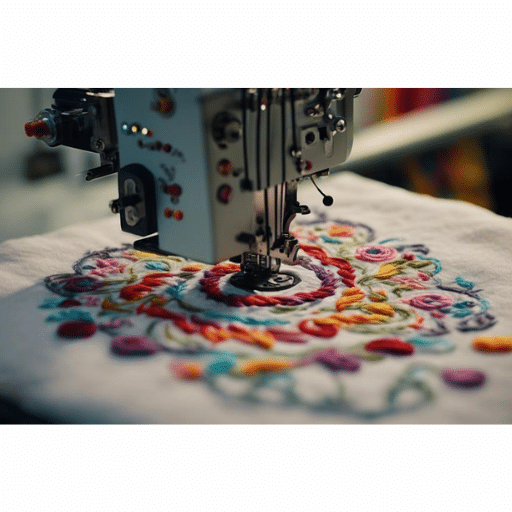
Beginning an embroidery business with large machines has business requisites. Such as the following points, which will give answers to the questions above:
- Choose Software that will integrate with your Embroidery Machines: Embroidery programs should be carefully chosen, such as those that support the specific make and model of your large embroidery machines. This will ensure that the software will work effectively with your machines.
- Software that increases the flexibility in creating designs: Embroidery software that allows advancing editing with the stitches assigned to the design would help, such as assigning resizing, changing the order of color blocks, and editing stitches so that the design sews out precisely as you envisioned it for your embroidery project.
- Library Management of Design Software: Consider how the software being bought has features associated with a library design. Look out for features that have easy categorization, faster retrieval, and capabilities for designing and exporting. This will enable smooth workflow handling, fast retrieval of designs for projects, and easier collaboration with clients.
- Lettering and Monogramming Features: For an embroidery business focusing on designs with pictorial letters or monograms, it is effective to employ software with enhanced typographic capabilities and variation features. This will help you create intricate, personalized designs for your clients.
- Assess Assistance From the Software Company: Determine if assistance is available at the designated firm. Be sure to check whether the software offers, at minimum, periodic patches, help desk support, and an extensive online help and document library. Such a system of support may be beneficial in helping you resolve problems more effectively and keeping you up to date with software developments.
This will enable you to combine the factors discussed in the previous section and offset the range to merge factors that will contribute to the effective functioning of your embroidery business and optimize the selection of the embroidery software for your large machines. This will enable you to generate unique designs efficiently, improve production processes, and win in the embroidery field.
What Is the Role of Thread in Commercial Embroidery?
The thread used in commercial embroidery is of utmost importance as it translates designs into a tangible format. There are a few factors that one must bear in mind while considering the role of thread in commercial embroidery:
- Quality and Durability: Thread plays an important factor in the quality and durability of embroidered designs. High-quality thread is best advised to make the embroidery more attractive and durable.
- Color and Visual Impact: To achieve a successful embroidery design, selecting a thread color has to be factored in. Moreover, the thread color must be in tune with the embroidery and fabric design. Many different colors allow for the embroidery to be creative and tailored.
- Thread Weight and Thickness: Thread weight and thickness affect the appearance and texture of the embroidery. Different thread weights can, for example, make things appear more 3D by drawing attention to certain areas. Choose a certain weight based on what you want and what fabric is used.
- Thread Material: The most common threads are made of cotton, polyester, rayon, or even metallic fibers. Each of those materials is distinguished by certain intrinsic characteristics that determine the end product. On the other hand, the finishing properties of the thread, such as sheen, strength, and flexibility, need to be considered in selecting the appropriate thread for a particular embroidery work.
- Thread Tension and Machine Settings: To attain good quality embroidery, the thread’s tension must be consistent across the surface. Hence, adjusting effort determinants, such as tension, prevents the thread from being excessively loose or suffocated enough that it creates imprecise stitch creation. Further, adjusting machined factors such as stitch length and density will also change how the final artwork will look and its quality.
Limiting the scope from those aspects without overstretching the criteria, a professional embroiderer may select the thread concerned with quality, color, weight, and material while minding the tension and machined settings to achieve an exceptional outcome that will satisfy customers’ needs.
How to Use a Single-Needle Embroidery Machine Efficiently?
You must be organized and detail-oriented to use a single-needle embroidery machine effectively. To do so, here are essential steps for you:
- Design Selection: Choosing the right design for your embroidery task involves considering factors like file format, width design, complexity, etc. The user’s machine must easily read the design file exported.
- Hoop and Fabric setup: Take a piece of fabric and attach it to the embroidery hoop so that it is tight and free of wrinkles. This step, embroidery fabric hooping, helps prevent the fabric’s distortion and ensures the design’s accuracy.
- Machine thread insertion: To fulfill this task, pick a thread that is best suited in terms of weight, material, and color. Also, check the thread types and tension from the User Manual, which corresponds with the project.
- Set up Machine Parameters: Set up the machine by adjusting stitch length, allowing for desired embroidery customizations. Included in the setup is verifying the speed and style of the machine using the needed manual or guide regarding chosen fabrics and their designs.
- Test After Threading: Since various designs are imprinted on the final pieces using threads, it is prudent to test-run embroidery machines with scrap pieces. This will enable you to determine if everything is set correctly and the desired quality is achieved in the selected place.
- Control The Process: Embroidery is usually consistent, but any issues can be solved as long as one pays attention during the embroidery stage. Checking the thread tension, whether threads have broken, and whether the fabrics are aligned are great methods of controlling stitch quality.
- Finish and Clean Up: When doing dimensional embroidery, take the fabric out of the hoop only once you have finished inserting the embroidery design. Also, cut off any loose or leftover threads, trim them, and iron the fabric if wrinkles occur.
Remember that picking up any craft is all about practice and experimenting. Following these steps and some relevant technical parameters helps you create stunning finished embroidered designs.
What Are the Key Considerations for Embroidery Designs?
When you consider creating embroidery designs, there are certain crucial things you ought to remember. Based on the wise contributions of the top Google sources, I have collated the following information.
- Design Selection: Embroidery designs for materials and stitching can be adopted. Consider design complexity, stitch density, and size to obtain the desired outcome.
- Fabric Preparation: Clean, press, and stabilize the fabric you intend to use. Correct appliqué will avoid whining and shifting during embroidering.
- Hooping Technique: Proper hooping is crucial to get accurate and even embroidery. Place the fabric in the hoop so that the fabric is securely and evenly hooped and no distortion or tissue stretching is done.
- Thread Selection: As a stitcher, consider high-quality embroidery threads suitable for the fabric and design. Consider thread weight, colorfastness, and durability relative to the desired effect.
- Machine Settings: Set your embroidery sewing machine according to the design and fabric you are using. It is very important to balance stitches, tension, stitch length, and speed settings to match the job requirements.
- Sewing test pieces and making modifications: Before using the final fabric, trial sewing should be done on a swatch of comparable fabric to assess factors like stitch quality, the position of the embroidery design about the fabric, and thread tension. Also, be ready to adjust anything to ensure the desired result.
- Overseeing the operation of the embroidery machine: During the embroidery process, it is wise to maintain a reasonable level of thread tension in the bobbin and on the needle. In addition, it is helpful to address any thread-cutting issues, unclog the machine, and occasionally lubricate per the maker’s instructions.
- Let’s try out some last bits of processing: As the final stage, remove the fabric from the embroidery hoop by carefully loosening it, trimming loose threads, and eliminating other embroidery defects so the fabric is ready for a revealing design. Other nicer modifications should incorporate steaming or pressing the fabric.
Considering such fundamental issues and the technical aspects while tackling any embroidery design problems ought to keep you engaged in delightful activities throughout this project. Appreciate the art of embroidering!
References
Frequently Asked Questions (FAQ)
Q: What is the maximum embroidery area available in large embroidery machines?
A: The maximum embroidery area can vary depending on the model, but many advanced machines, such as the Janome Memory Craft, offer a large embroidery field that can accommodate designs up to 9.25 inches.
Q: How does the EOC06 embroidery machine compare to other models?
A: The EOC06 embroidery machine is known for its user-friendly features and reliable performance. It offers an automatic needle threader, built-in stitches, and a spacious embroidery field, making it a great option for beginners and experienced users.
Q: What are the benefits of a multi-need embroidery machine?
A: Multi-needle embroidery machines, such as those with 12 or 15 needles, allow for faster embroidery by reducing the need for thread changes. This especially benefits small businesses or craft enthusiasts who must efficiently produce designs.
Q: Can I edit designs directly on the embroidery machine?
A: Yes, many modern embroidery machines, like the Brother PE900, come with an LCD touchscreen that allows for on-machine design editing. This feature makes it easy to customize and adjust your designs as needed.
Q: Is there an embroidery machine suitable for beginners?
A: Yes, several embroidery machines are designed with beginners in mind. For instance, the Brother NQ1700E offers user-friendly features such as automatic threading and various built-in designs, making it an excellent choice for newcomers to embroidery.
Q: What exclusive features should I look for in an embroidery machine with a bonus bundle?
A: An embroidery machine with an exclusive bonus bundle often includes additional machine hoops, digitizing software, and accessories like a magnetic embroidery hoop or hat embroidery kit, which can significantly enhance your embroidery projects.
Q: How important is the machine’s maximum speed (SPM) for embroidery?
A: The maximum speed, measured in stitches per minute (SPM), is crucial for efficiently completing embroidery projects. Machines with higher max speeds, such as those offering 1000 SPM or more, are ideal for large and complex designs.
Q: What connectivity options are available in modern embroidery machines?
A: Many modern embroidery machines offer wireless and USB connectivity, allowing you to transfer designs from your computer or mobile device easily. Some models even have WiFi available for direct internet access.
Q: Are there portable sewing machines with embroidery capabilities?
A: Yes, portable sewing machines also offer embroidery functions. Models like the Bernette are compact yet powerful, making them ideal for those needing a mobile solution without compromising embroidery quality.




